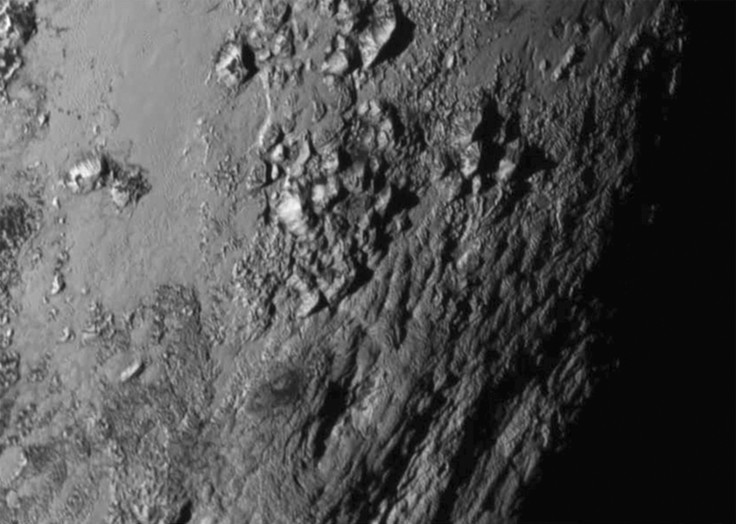Physicist suggests Pluto could support life through underground oceans; may already harbour life forms

Scientists have determined few geographical features about Pluto and its moons after NASA’s historic New Horizons mission that has provided clear images and data about the never-before explored space objects. The data shows Pluto’s surface as dominated by icy plains and mountains, which physicist Brian Cox believes could harbour alien life within its subterranean seas.
The data retrieved by NASA from the probe has pointed at the presence of subterranean sea beneath Pluto’s icy plains that is warm enough to host life, the British physicist said. However, experts still haven’t figured out what is under the frosty exterior of the dwarf planet, and would suggest that it’s highly unlikely for life to exist on its surface.
According to Cox, there could be a possible presence of organisms living under the planet’s outer crust, in warm oceans. Although the presence of watery environments beneath Pluto was not proven yet, Cox believes that it’s certainly possible that life could exist, which could be likely to be simple life forms, such as single-celled organisms.
The New Horizons spacecraft “showed you that there may well be a subsurface ocean on Pluto, which means — if our understanding of life on Earth is even slightly correct — that you could have living things there,” Cox told The Times.
The principal investigator of the New Horizons mission, Alan Stern, said the bedrock that makes the ice-mountains must be made of H2O, or water ice. The retrieved data shows the presence of water ice on Pluto for the first time, which the New Horizons team is “very sure” that the water is “in great abundance,” he added.
However, NASA has only seen five percent of the information taken by the probe, which indicates that there’s still much more to do to fully understand the planet. The team will continue to receive more data from the probe in the coming weeks, which scientists say it is still impossible to know if any of the new information will reveal enough about the temperature of Pluto’s water environments to support Cox’s speculation.
Aside from Pluto, scientists have already discovered similar findings on the moons of Jupiter and Saturn. NASA plans to launch a life-hunting mission to the Jupiter moon Europa and possibly to the Saturn’s moons Titan and Enceladus by 2020. The mission could deliver further details about the presence of oceans under the icy exteriors of each moon and may also support Cox’s speculation about Pluto.
But Cox warned against the excitement about finding other living things in the galaxy as those organisms may not have evolved to become as complex as life on Earth. The Earth is definitely physically insignificant, and he suggests not to attach too much significance to the human race, given the size of the possibly infinite universe.
New Horizons scientist John Spencer said "there's so much that we can learn from close-up spacecraft observations that we'll never learn from Earth, as the Pluto flyby demonstrated so spectacularly.” The detailed images and other data that New Horizons could obtain will revolutionise the understanding about the Kuiper Belt and other space objects.
Contact the writer at feedback@ibtimes.com.au or tell us what you think below.





















